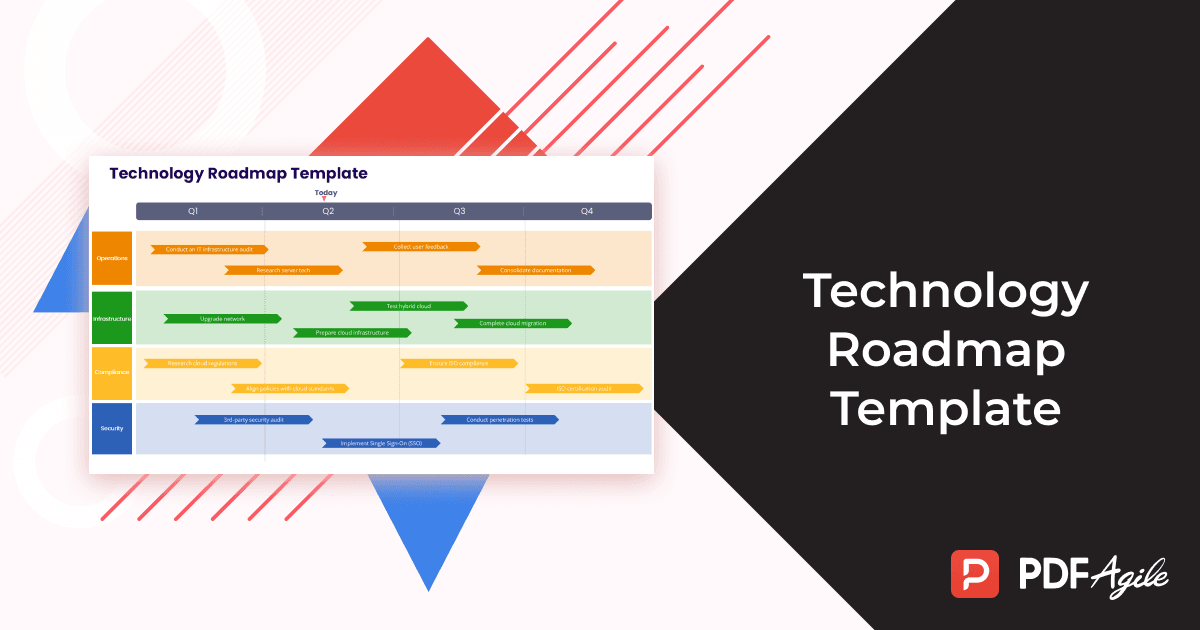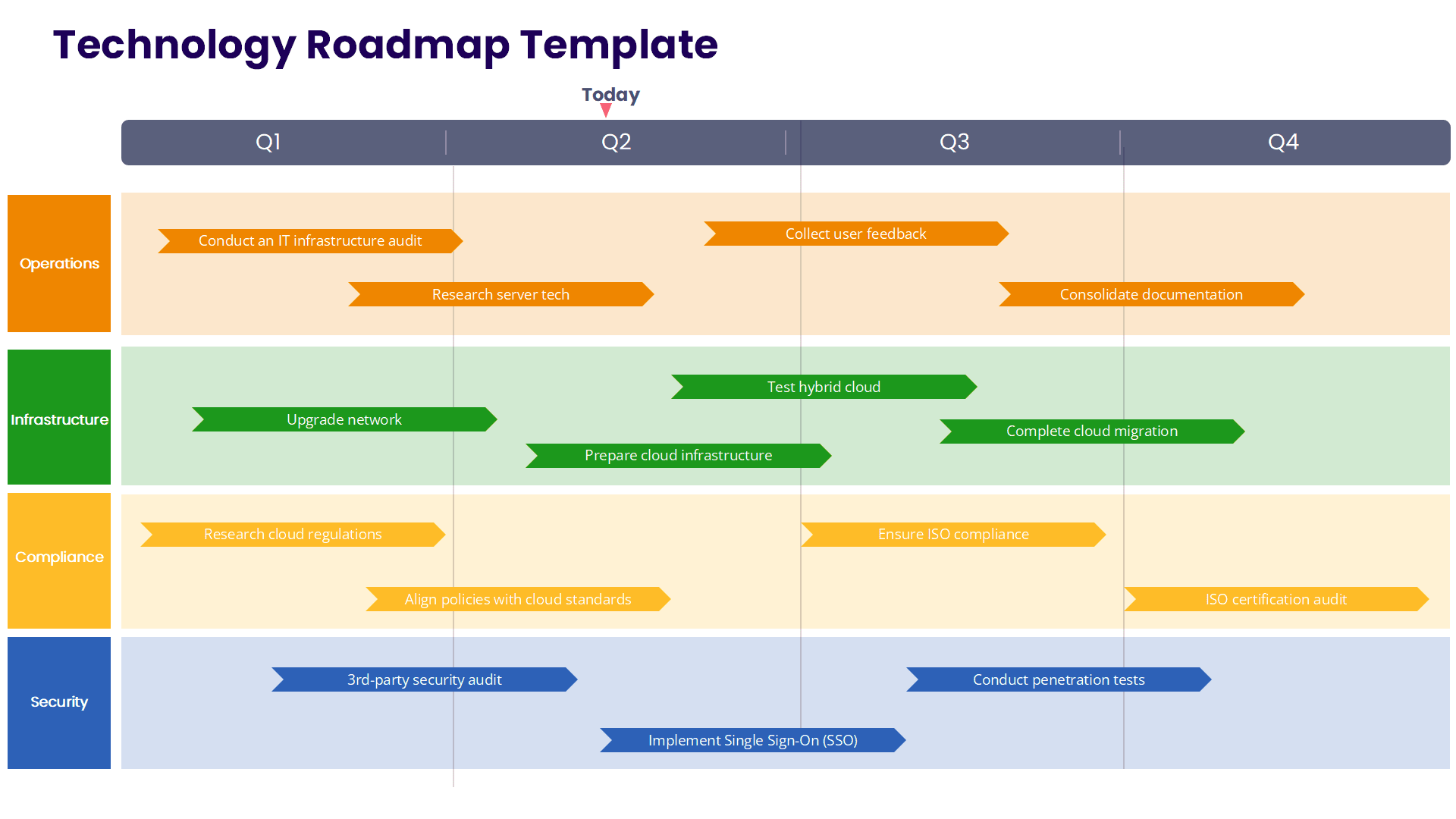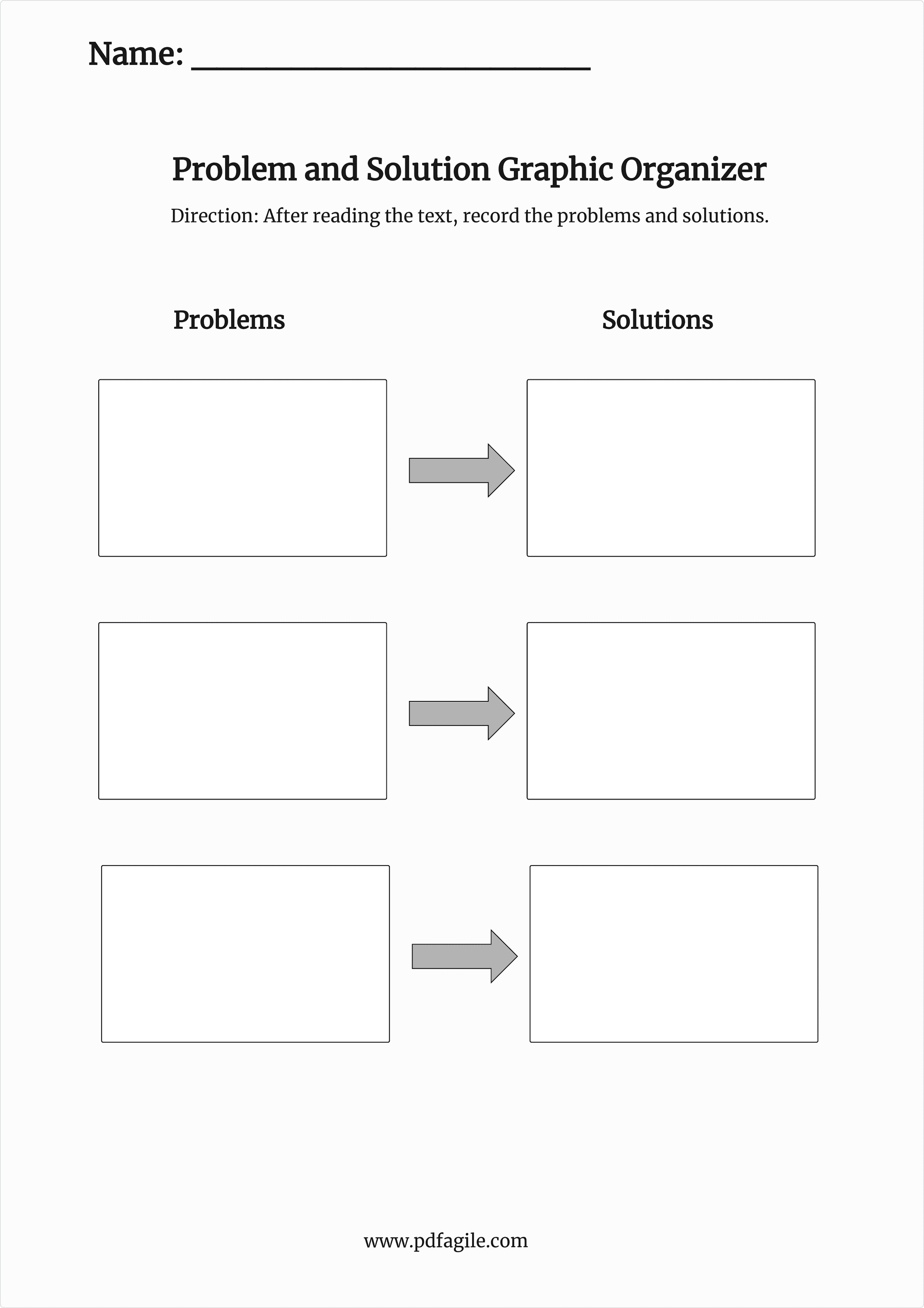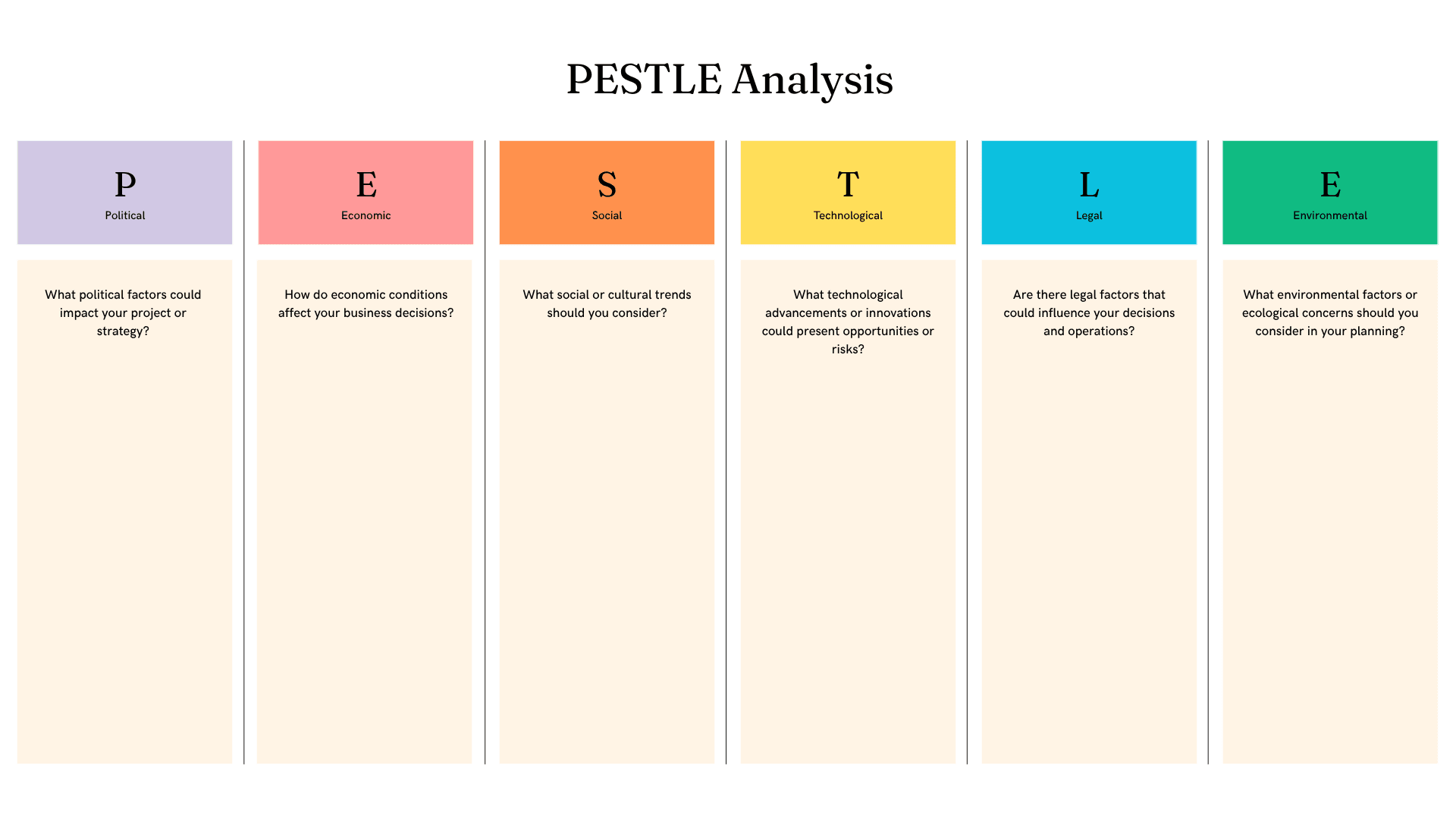Let's be honest, the tech world feels like a runaway train sometimes. New innovations emerge daily, and the pressure to adapt is relentless. You've probably got a brilliant vision for where technology can take your business, but translating that vision into a clear, actionable plan can feel like trying to catch smoke. That's where the unassuming hero, the technology roadmap template, steps into the spotlight.
Forget the image of rigid, lifeless spreadsheets. Think of a technology roadmap template as the intelligent co-pilot for your tech journey. It’s not about filling in blanks on a pre-designed form; it’s about crafting a compelling narrative of your future success, with technology playing the starring role. It's the difference between aimlessly wandering in a tech wilderness and confidently navigating towards your strategic goals.
What Exactly is a Technology Roadmap Template?
Think of a technology roadmap template as a pre-designed framework that helps you visualize and strategize your organization's technological journey over a specific period. It's a strategic blueprint that outlines how technology will be utilized to achieve your business objectives. Instead of starting from scratch, the template provides a structure with predefined sections and prompts, making the roadmapping process more efficient and focused.
A good template will guide you in identifying:
- Your current technological state: Where are you now?
- Your desired future state: Where do you want to be?
- The technological initiatives and projects: What steps will you take to get there?
- The timeline and milestones: When will these steps occur?
- The resources and dependencies: What do you need and what factors might affect your progress?
Why Embrace a Technology Roadmap Template? The Benefits are Clear
Utilizing a technology roadmap template offers a multitude of advantages for your organization:
- Strategic Alignment: It ensures that your technology investments directly support and enable your overarching business goals. This alignment is crucial for making informed decisions about which technologies to adopt and when.
- Clear Communication: The template provides a clear and detailed vision of upcoming technology projects and timelines. This shared understanding improves communication amongst all stakeholders, from executives making strategic decisions to team members executing the plans.
- Improved Collaboration: By clarifying project expectations, timelines, and roles, a technology roadmap fosters better collaboration and coordination across different teams and departments.
- Effective Prioritization: The structured format helps in prioritizing technology initiatives based on their impact and alignment with strategic goals. This ensures that resources are allocated effectively to the most important projects.
- Long-Term Planning: Technology roadmaps facilitate long-term planning by helping organizations anticipate future technology needs, identify market trends, and plan for the integration of emerging technologies.
- Proactive Risk Management: By visualizing the entire technology journey, potential challenges and dependencies can be identified early on, allowing for proactive mitigation strategies.
- Efficient Resource Allocation: The template helps in identifying the necessary resources (budget, personnel, tools) required for each stage of the roadmap, ensuring that resources are planned and secured in advance.
- Progress Monitoring: With clearly defined milestones and timelines, it becomes easier to track progress and monitor the effectiveness of your technology initiatives.
Best Practices for an Effective Technology Roadmap
To maximize the effectiveness of your technology roadmap template, consider these best practices:
- Keep it Concise and Clear: Avoid unnecessary jargon and focus on clear, concise language that all stakeholders can understand.
- Focus on Outcomes, Not Just Outputs: Emphasize the business value and outcomes that the technology initiatives will deliver, rather than just listing the technologies being implemented.
- Be Realistic and Flexible: While it's important to have a vision, ensure your roadmap is realistic and adaptable to changing circumstances.
- Regularly Review and Update: The technology landscape is constantly evolving, so make sure to review and update your roadmap regularly to reflect these changes and ensure continued relevance.
- Use Visuals Effectively: Leverage charts, timelines, and other visual elements to make the roadmap easier to understand and communicate.
- Tailor the Template to Your Needs: Don't be afraid to customize the template to fit your specific industry, organizational structure, and strategic priorities.
- Communicate Progress Regularly: Keep stakeholders informed about the progress of the initiatives outlined in the roadmap.
Technology Roadmap Example
To better understand how an IT roadmap can be applied in practice, let’s examine how a company planning an Enterprise IT Infrastructure Upgrade might use this framework to streamline its technology transformation. By clearly defining phases and setting specific milestones, the company can ensure its IT systems are efficiently upgraded to meet future demands, enhance security, and ensure regulatory compliance.
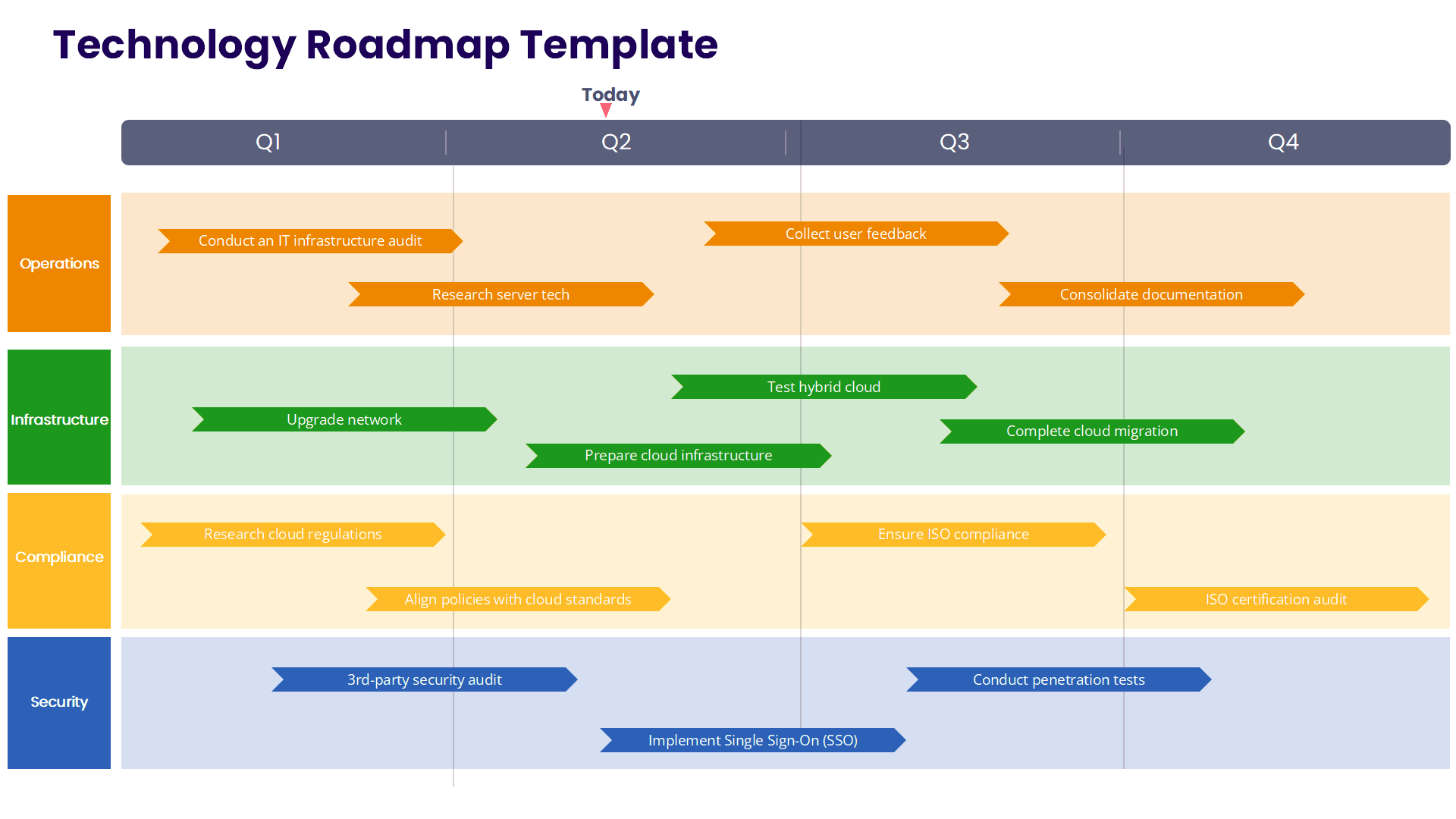
By following this structured approach, the company can successfully upgrade its infrastructure, ensuring a seamless transition to a hybrid cloud environment while strengthening security and meeting compliance requirements. This strategic plan will help the company improve its operational efficiency, safeguard its data, and position itself for long-term success in an increasingly digital landscape.
Free Download: Technology Roadmap Template
You can download the Technology Roadmap Template mentioned above by clicking Use Template button on this page. Customize it to fit your specific needs and preferences.
